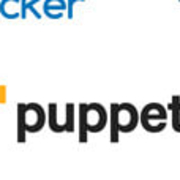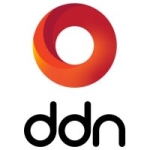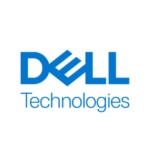What is our primary use case?
One thing about Snapshot is that it can be used for so many things. Say, for example, I want to take a backup of my database at a scheduled time, I can take a snapshot of that on whatever schedule I want. The snapshot takes just a few seconds to record. During the capture and while taking the snapshot, the database is frozen for me for only a few seconds that the snapshot takes. I can now mount that particular snapshot — or any snapshot — and then begin to do a clone of this database. This means I do not have to take the database offline to do a backup.
That is just one example of what this product can do. Many companies find it very, very useful to use this feature for their backup purposes. I do understand that quite a number of enterprise-class backup solutions like NetBackup and other backup solutions in this category now have integrated snapshots into their solutions as well following NetApp's lead. It just shows that other companies are aware of the fact that it is a very good feature as a way of dealing with backups.
In another case, some of my customers do backups every hour and some backup every two hours, depending on their requirements. The reason for that is they want to protect themselves in case there is any corruption or anything happens to their data. If so, they can roll back to the most current and the most useful version of their database.
Snapshot also comes in very handy with their cloning feature. Say, for example, you want to create a new product and you want to make sure that you test the product on your live database, but you obviously do not want your development to have any impact on your live database. This is an instance where it is useful to do what NetApp calls a clone.
You create the clone and a current snapshot is embedded in the clone. So now you can take a copy of that volume of whatever you wanted to clone, and then you can begin to use this for the development of your new product. The footprint is very small in the sense that it is already data that you modified and that takes up very little space. You cannot modify any of the live data and you cannot add any new data. The actual memory space that you are using by working with the clone is almost zero but it is the same data captured at the moment where the snapshot was created.
So those are a few very good advantages that the Snapshot product has. The ability to clone is unique. The cloning feature is called FlexClone.
What needs improvement?
In the FlexClone, I currently have not seen a need for any particular improvements because it is already so flexible and so robust. I do not think that most of my customers have actually exercised the features that are already embedded within the design of FlexClone.
I am not seeing how these features that the customers already have but do not often need to take advantage of really need to be improved. They are very useful when needed, but just are not often used. We are talking about clients in demanding industries like in banking and financial industries, and also in oil and gas. If they do not need more functionality and can perform the tasks that they need without interruption because of the current feature set, there is really nothing to add.
There is one thing about documentation. The documentation is always very good. But you know, there are some people who are very lazy when it comes to reading documents. This is more of a problem than the application.
If there is a problem with the product itself, I don't know what it is. If NetApp wants to have a bigger share of the market, I would suggest they look at the pricing in comparison to the competition and make the appropriate change. The pricing should be lowered. If the pricing could be made more attractive, then without a doubt they are going to have more customers and they will advance in the marketplace. No doubt about that.
For how long have I used the solution?
I have been working with NetApp Snapshot for about 16 years as a reseller.
What do I think about the stability of the solution?
NetApp is extremely stable. No doubt about that.
What do I think about the scalability of the solution?
Scalability is very good. For example, if you start with the most elementary package, you can easily migrate to the mid-range package. All you need to do is change your contracts. Once you address your contracts, the product is already scaled to the mid-range. The same thing applies to the enterprise. Because of the way it is structured, you have the entire structure of the product already there. The solution that we use for the entry-level is the same solution that we use for the mid-range and also the same structure we use for the enterprise version. So the only thing that makes a difference are the contracts. This structure makes it very easy to scale — vertically and also horizontally. So the scalability aspect of the product is very, very good.
We have all types of customers. Our clients are small, medium or enterprise companies. If they are a small company just starting, there is a NetApp version for them and they can start with the minimum contract. If they are a medium-sized company, there is a version available for their needs. If they are an enterprise-class company, they can start with the enterprise contract. Mid-sized and small clients can scale up as they need to just by paying more to upgrade the contract. It is very scalable.
One last thing is that you can have both NAS (Network-attached Storage) and SAN (Storage Area Network) in the same storage component. So when they buy the product they can use the same storage for both NAS and SAN and everything is embedded in the system.
How are customer service and technical support?
When it comes to the technical support system, they keep tabs on whatever they know has been reported and what has been resolved as far as bugs. They know what patches or updates were issued to resolve the problem. If you have any issues, you report them straight-away. All the people within the loop of the support team are copied on the report so they all know what is going on. That information is also available to the central support family as if you have one dedicated technical service representative.
They take immediate action to make sure that whatever problem has been reported is taken care of within the specified time that you purchase from NetApp. So if you purchase to have a resolution within four hours or within twelve hours, as long as the fix is available, you will receive your resolution within that time. To the best of my knowledge, NetApp has been able to keep to those timelines and meet the demands.
If it is the next delivery day, then they will send the bug fix to your office. It is very easy to repair things. You locate the component that needs to be replaced, you remove it and put in the new one and you are ready to go, straight-away. It is very easy.
How was the initial setup?
In my old position as the managing director of the company, I did not go into that level of detail with the clients as far as being directly involved in the setup. There were other people who we sent out on location. So I have a broad overview of what NetApp software needs for the setup.
I think that NetApp is very easy to set up. To put it in perspective for someone that has never worked with this product before, this usually means that they will be starting a migration into NetApp. They start this by doing the initial installation of NetApp. Then they create your aggregate data set, then you create your volumes, then you create your nodes. Then you map your nodes to your server and then you are good to go. So it is very straightforward from that perspective. It may be more complex if a client has special requirements. This is the same for most products.
What's my experience with pricing, setup cost, and licensing?
As far as their licensing costs, the licensing is paid on a yearly basis. The organization pays for the licensing based on the software and the capacity that they choose. Once the license expires, you can renew it for another year up to the time that the software is supported. As soon as the support ends for the software it is unavailable. You have to update the license and you need to re-purchase storage.
Updating is really not an alternative anyway in a competitive market because technology is not stagnant. Technologies advance for many reasons and there are more capabilities available all the time. It is much better for the user if they make sure to keep tabs on the technological advancements.
What other advice do I have?
My advice to people who are considering NetApp as a solution is that rather than just looking at the solution and what it does, they should look at it in relation to their business requirements.
I believe that the sophistication of Snapshot is not necessary for every company because of what you have to pay for it. Any company that needs to make backups can use the products from any vendor who sells a product in this category because the product is going to make the backups. The advantage you have with Snapshot, in addition, is to have the availability to make very quick backups. So even if you do not want to use the resources to backup data by uploading it to separate storage, your backup is still available for you intact within NetApp, and you can then do the uploading. So that is a very good feature. No doubt about that.
But this idea of evaluating need applies to all companies with respect to what they are doing. They need to consider which product fits them.
On a scale from one to ten where one is the worst and ten is the best, I would rate this NetApp Snapshot product as a ten-out-of-ten.
In the case of Snapshot, you can quickly grasp how to use something within a minute by reading the documentation. Instantly, after you start using it, the process always becomes ingrained in your brain. The software is so well developed and mature that the processes are not changing often. To the best of my knowledge as someone who is using NetApp for 14 years, it is an important thing to have the processes in the application as well-thought-out and stable. Although there have been improvements over time, NetApp is a very stable application that is easy to stay familiar with.
In fact, it may not be the application that needs to change so much as the clients using it. They may need to get some storage devices replaced because of the Snapshot features are so robust. That is also how NetApp gained ground in the market with that particular app: by being the leader.
Which deployment model are you using for this solution?
On-premises
Disclosure: My company has a business relationship with this vendor other than being a customer. Reseller










